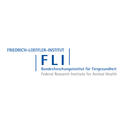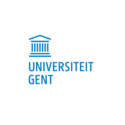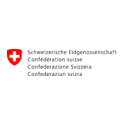In short
African swine fever (ASF) is an important viral disease in domestic pigs and wild boars with up to 100% mortality. No vaccines are available so far to contain the disease.
This project addresses gaps in understanding ASF disease. The consortium identifies factors at the level of the pathogen, the host species and their immune cells that define host/cellular susceptibility and protection. Moreover, we explain phenomena such as the observation of higher seroprevalence rates or resistance in the field.
Project description
African swine fever (ASF) is one of the most complex viral diseases affecting livestock, with tremendous socio-economic impact. Over the last decade, the disease has conquered several new areas and keeps spreading.
The causative agent is an enveloped DNA virus of the Asfarviridae virus family that is generally rather stable. The disease has its roots in sub-Saharan Africa where it is transmitted in an ancient sylvatic cycle among warthogs and soft ticks of genus Ornithodoros. This cycle is not accompanied by overt disease or mortality in warthogs. However, any introduction of the disease into the domestic pig sector or into Eurasian wild boar populations leads to a severe multi-systemic disease that can resemble a viral haemorrhagic fever with exceptionally high lethality (over 90% of the infected animals die). To date, neither treatment nor a licensed vaccine exist and detailed knowledge about correlates of protection but also severe outcomes and pathogenesis are lacking.
To address gaps in understanding ASF disease, this consortium identifies factors at the level of the pathogen, the host species and their immune cells that define host/cellular susceptibility and protection. Moreover, we explain phenomena such as the observation of higher seroprevalence rates or resistance in the field. Specifically, we evaluate correlates of protection and basic host-virus interactions in multiple hosts including
- susceptible domestic pigs (SPF and conventional farm-raised)
- European wild boar
- resistant red river hogs.
We compare responses of relevant ASFV strains with moderate and high virulence in these hosts. For part of this work, we employ a systems immunology approach that uses computational biology tools to process all collected data from the consortium including virological, clinical and immunological readouts and immune cell transcriptomics. This will identify immunological processes and mechanism of both the innate and adaptive arms that are relevant in controlling ASFV or on the contrary that relate to disease severity. Among the studies addressing the long-term fate of animals and drivers of disease dynamics, we experimentally address the impact of maternal immunity on disease outcome using a sow suckling piglet model.
Moreover, we also address the possibility of ASFV reactivation following survival from ASFV infection. To this end, we use classical swine fever superinfection and chemical immunosuppression. Addressing dose responses as an explanation or means for outcome variability, we also use repeated low dose infection followed by highly virulent challenge of those pre-triggered animals.
Finally, we formally investigate the presence of the virus in semen and possibility of vertical transmission. We examine evolutionary pressure on the viral genome by host immune responses for the different isolates using deep sequencing. We investigate aspects of cellular susceptibility in macrophage subpopulations by combining complementary approaches in vivo and in vitro.
The project combines knowledge, expertise, and reagents of six teams with high international reputations in ASFV research and porcine immunology to improve basic knowledge on ASFV host interactions and mechanisms of protective immunity. The multipronged and combinatorial approach of this consortium reveals virus-host interactions at the animal and cellular level, which will reveal mechanisms of higher resistance, immunity and alternative transmission pathways.
Sciensano's project investigator(s):
Service(s) working on this project
Partners







